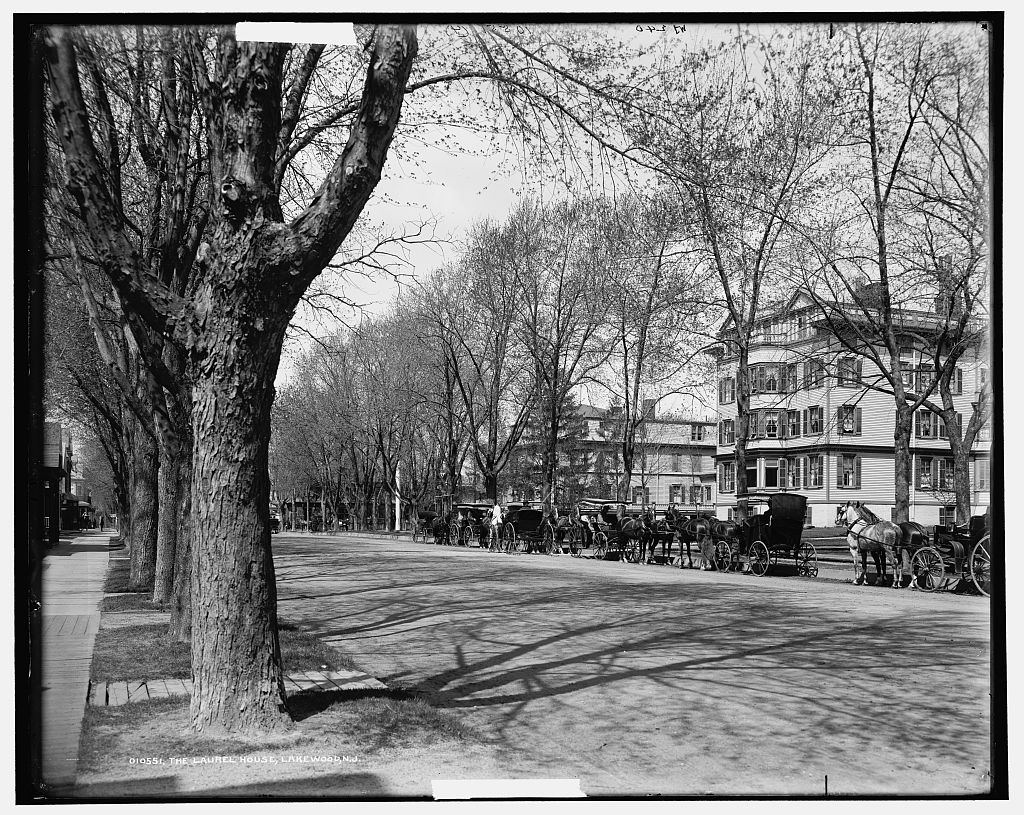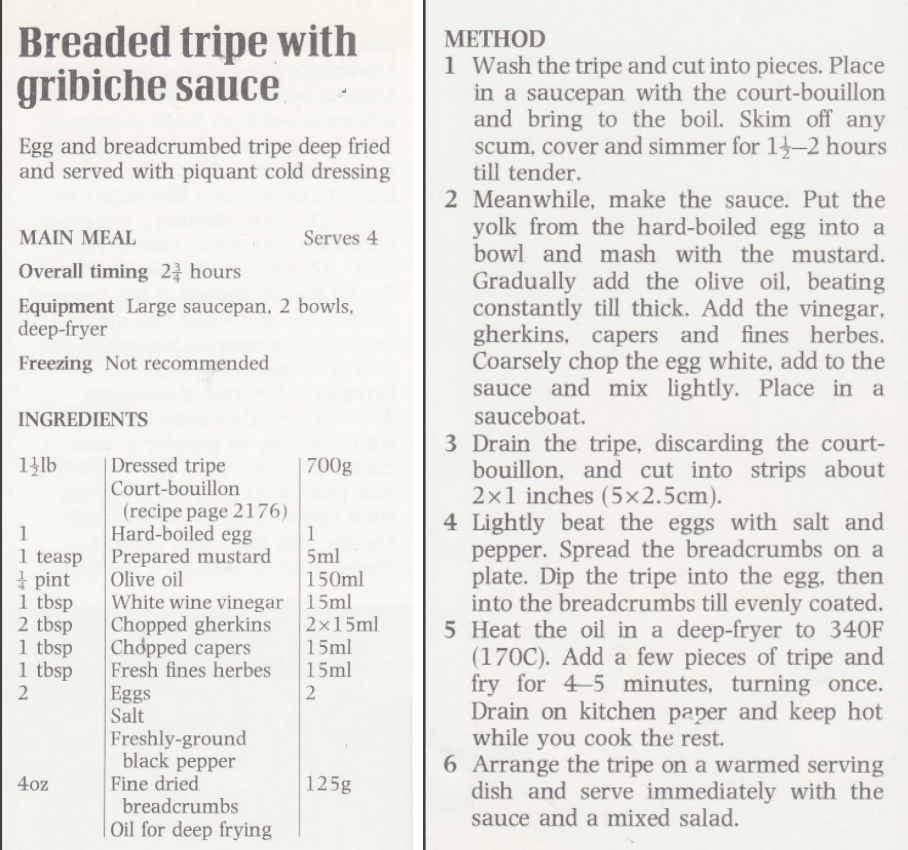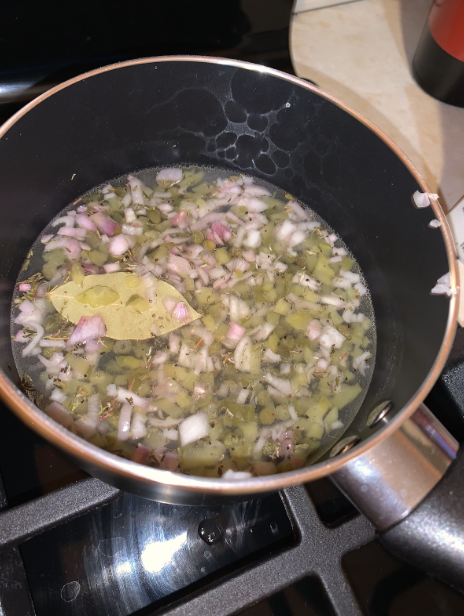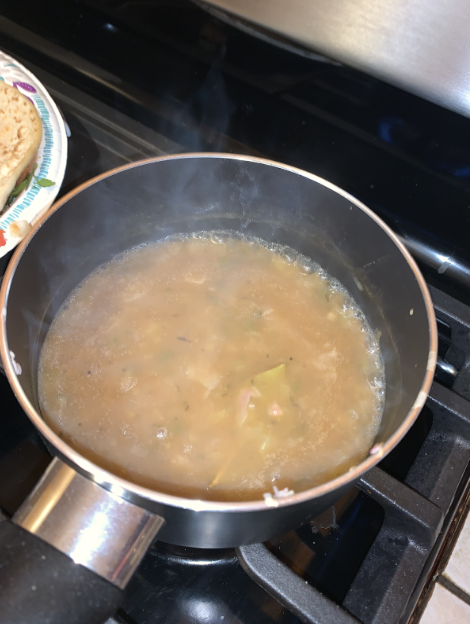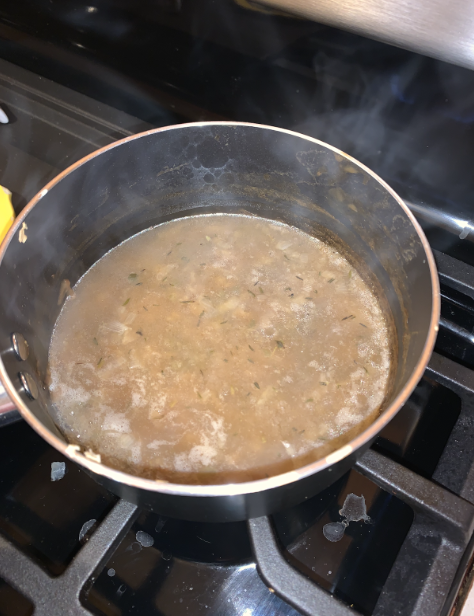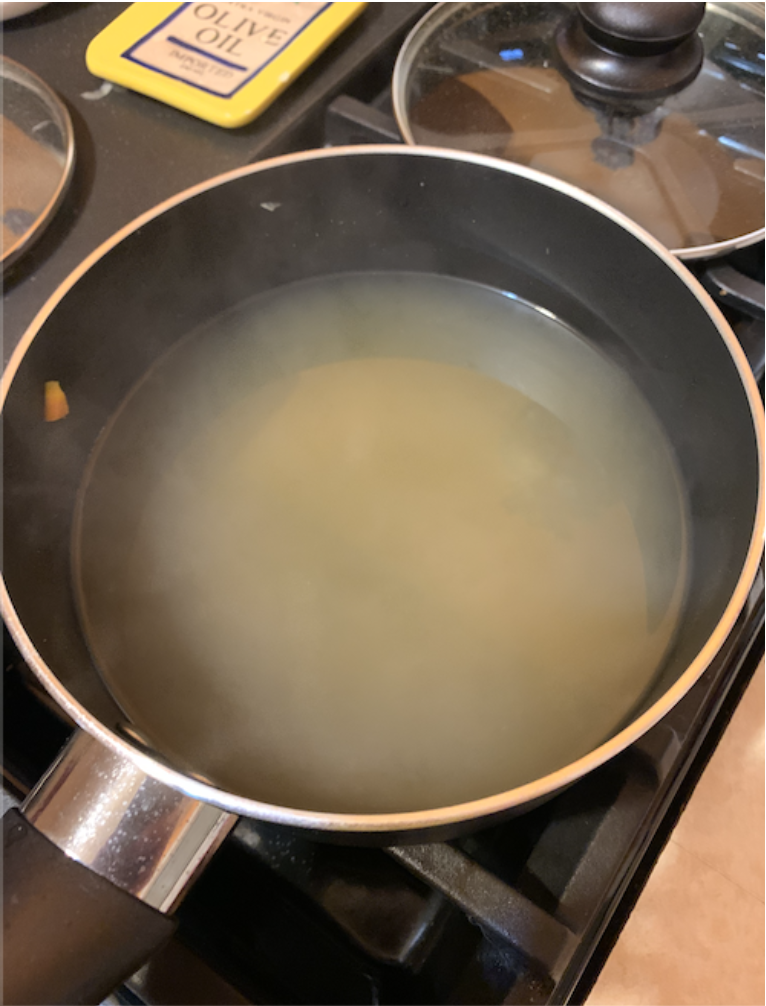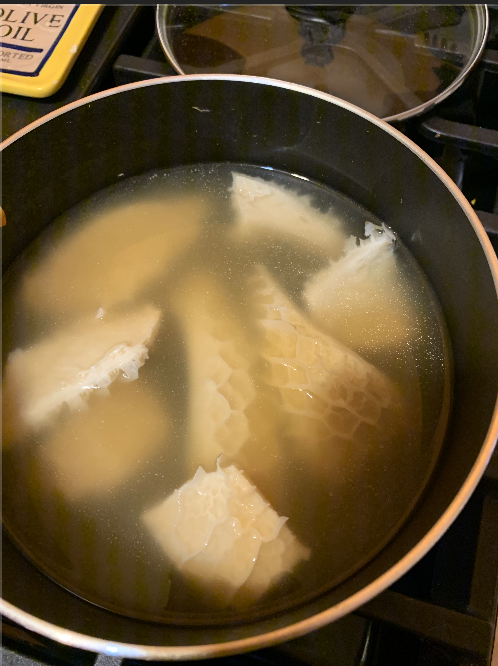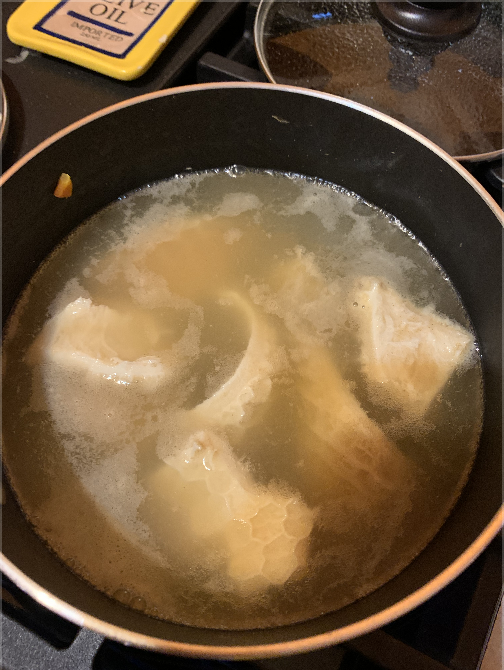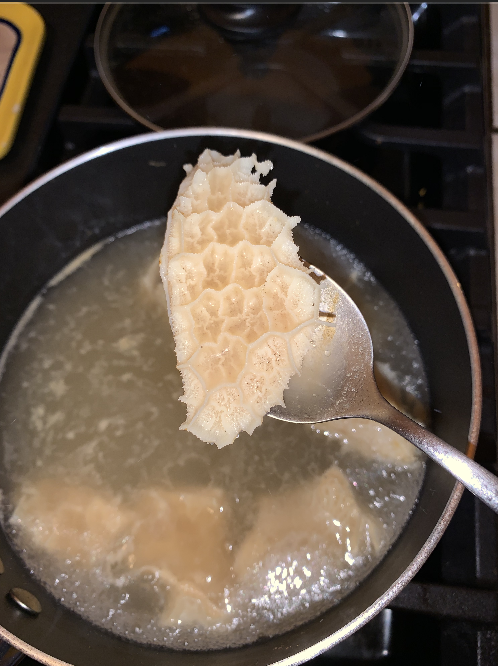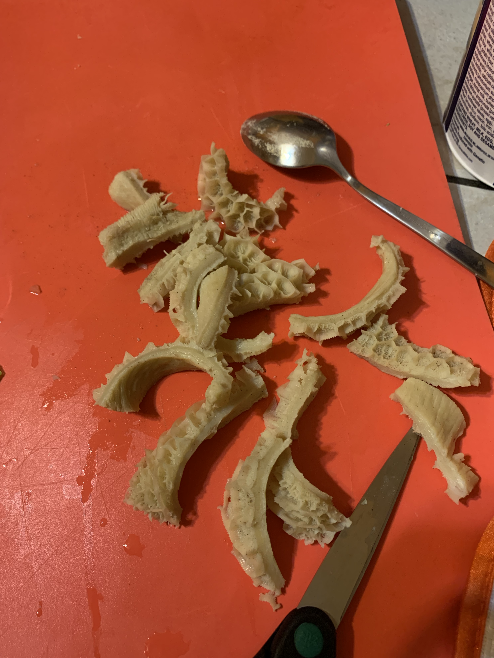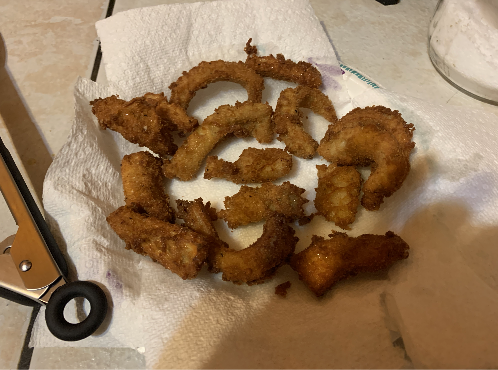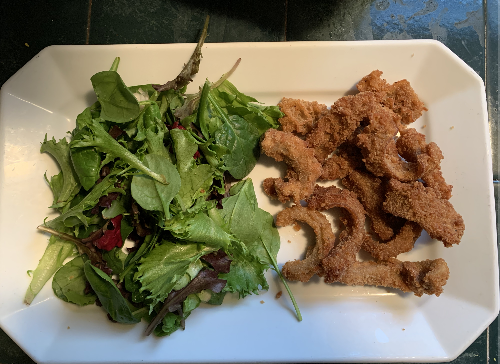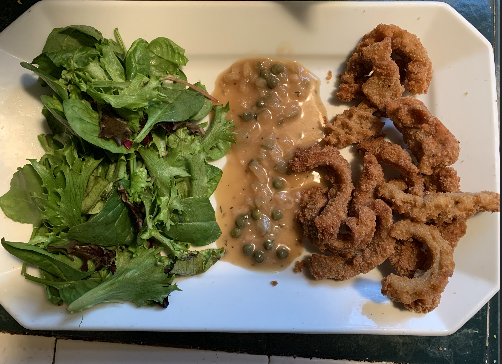Lakewood, New Jersey was a town made up of millionaires and common folk that housed both pivotal events and everyday happenings. The area was first developed in the early 1800s when three brothers settled and utilized the land for their mill company. In the mid 19th century, Lakewood became a hub for iron work and eventually, the railroad was extended and helped connect New York and Philadelphia. Once they were connected via the railways, hotels began to appear in Lakewood and eventually, it became a popular travel destination for all kinds of people. It was described as being the most famous winter resort in the East, having the likes of the Vanderbilts, Astors, Rockefellers, Foulds, Rhinelanders and Kipps building houses along the lake there. Of these grand establishments, the Laurel House, was deemed to be “the first great resort erected in America” when it opened in 1881.
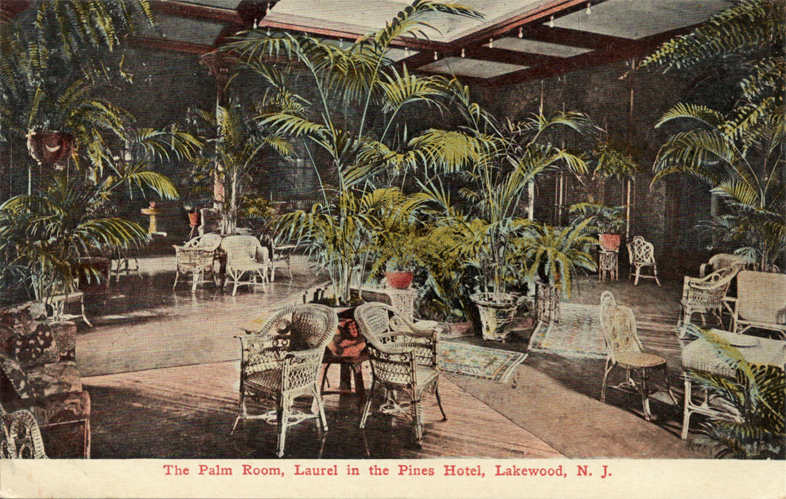
In the spring of 1883, for dinner at the Laurel House, one could be found eating a bowl of tomato soup with rice, or a piece of boiled halibut with shrimp sauce, or enjoying a nice slice of apple pie.
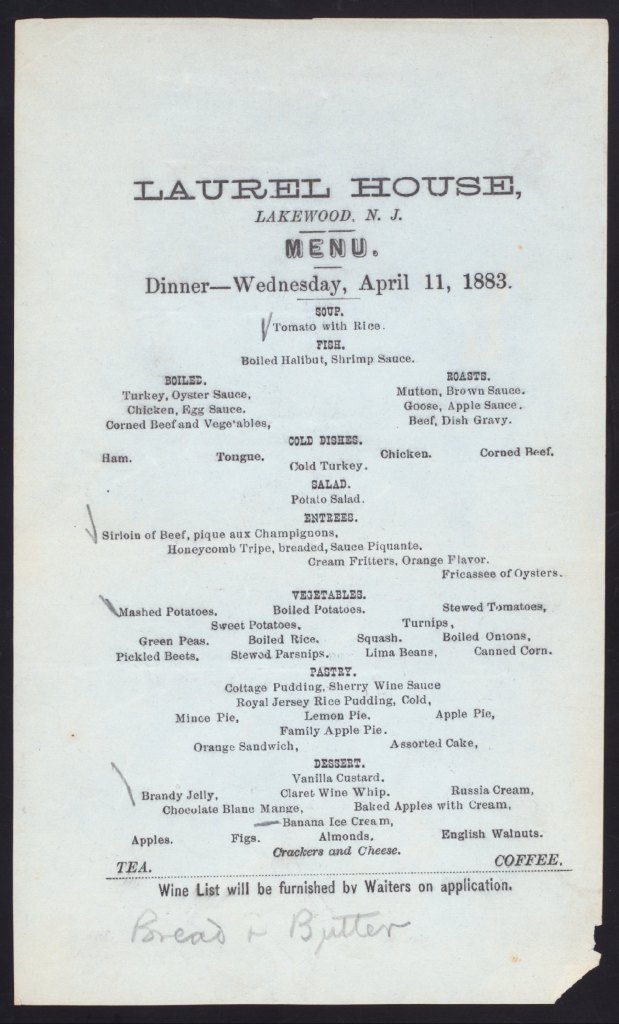
These dishes all sound nice but there was one dish in particular that stood out- Honeycomb tripe, breaded and served with sauce piquante. Before seeing this on the menu for Laurel House, I had no idea that people actually ate this part of a cow. When I was researching it, one of my friends recognized it as Menudo, and said she had eaten it the night before in a soup her mom made, and that it is delicious. This piqued my interest and made me want to know more about it.

Tripe is the muscle wall of the first three chambers of the cow’s stomach: the rumen, the reticulum (honeycomb), and the omasum. I would think that people decided to eat this particular part of the animal to try and not let anything go to waste. It is a muscle and probably has an intense flavor as it comes from the stomach. This could make it absolutely delicious.
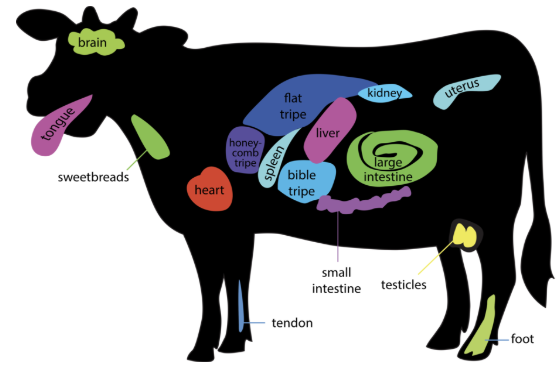
In order to determine the most accurate way to cook the tripe, I searched for recipes in two cookbooks from the early to late 1800s. The Modern Cook was written by Charles Francatelli, who was an Italian British cook, and it serves as a key to early French cooking terminology. The second cookbook was The Epicurean by Charles Ranhofer, who was a classic French chef. The Epicurean is an encyclopedia-esque cookbook that details thousands of different recipes, in concise blurbs. From these two cookbooks, I found that tripe could be cooked in numerous ways- Eggs a la tripe, Tripe baked with parmesan cheese, Tripe Lyonnaise, Parisian style tripe, Tripe paupiettes, or Tripe cooked with fine herbs- but no Tripe, breaded, with sauce piquante. Despite not being able to find a recipe from the exact time period, I found a recipe for the exact meal in another cookbook, the second volume of the Complete Cook cookbook. I think that it is extremely interesting for this period in time to have something breaded and fried as that concept of cooking is something that has remained prevalent throughout American history.
For the sauce piquante, other than the one in the recipe above, I found two opposing recipes from the Francatelli and the Epicurean cook books.
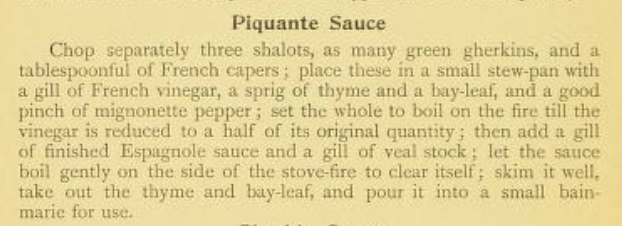
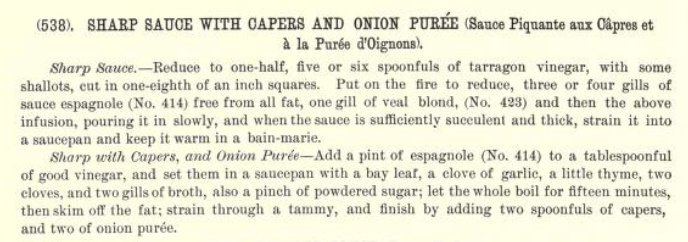
With these recipes in mind, I planned a trip to the store to pick everything I need up and then start cooking! For the tripe, Vanessa recommended I go to a hispanic grocery store as it is a popular item and that is where her mom gets it. For everything else that I can’t also go get at the hispanic grocery I will probably grab from rouses as that is what is closest to my house.
~ Let the Cooking Commence ~
Vanessa, as promised, took me to the Ideal Market, where to my extreme surprise- they actually had honeycomb tripe!! When asked how much we wanted, Vanessa said *in Spanish* “… half a pound..?” and the butcher took out a chunk of it, rang it up as tilapia, and gave us this frozen hunk of cow intestine. Delicious. From there we gathered other bits I needed for cooking like some extra oil to fry in, capers (because what college students casually carry capers?), some breadcrumbs… we also got al pastor tacos because we knew my project was going to take forever and who can pass up al pastor tacos? My cooking experiment ended up being a friend-sponsored event as Sydney let me use her kitchen while we all hung out but sadly, neither Syd or Vanessa aided me in washing, boiling, or frying the tripe.
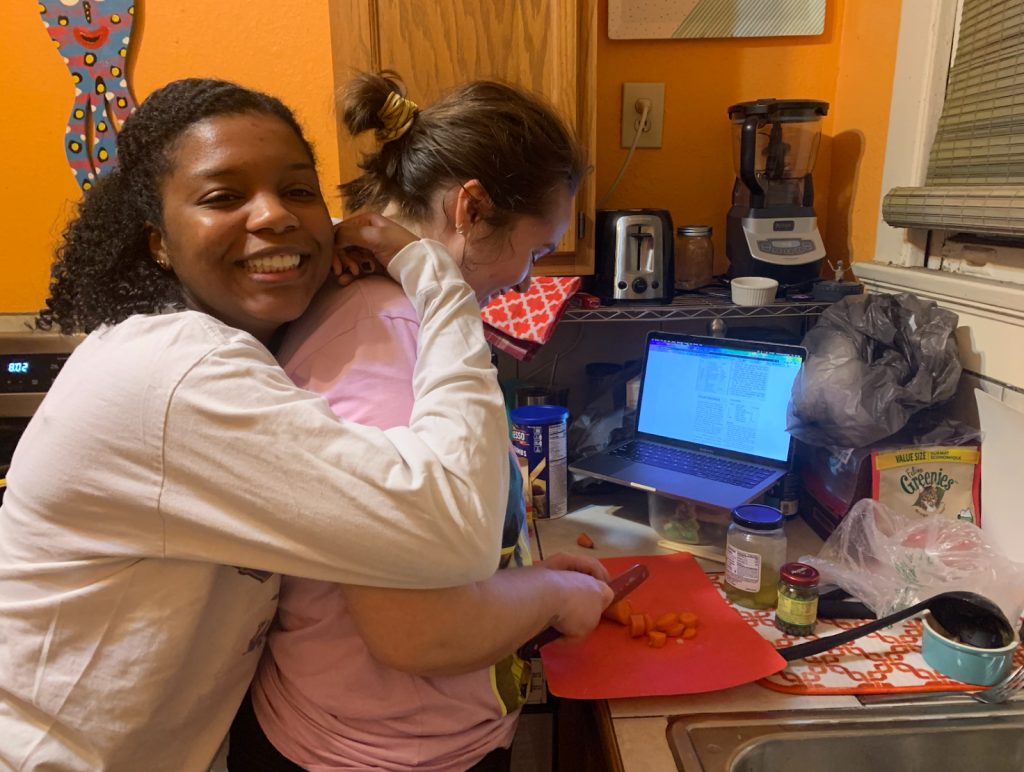
Me, chopping up carrots for the court bouillon while Sydney offered moral support
The first thing I noticed when I took the tripe out of the bag to let it defrost was that it smelled like cat breath but even worse. While I let it defrost, I began to work on the piquante sauce. The one I decided upon was the recipe from the Francatelli cookbook because it was the one that made the most sense to me at my low cooking level. I chopped up some pickles, grabbed the chopped onions Sydney kept in her freezer, and raided her spice cabinet for the bay leaves, thyme, and mignonette pepper (which I guesstimated as a mix of black and white pepper).
1: Everything in the pot for the sauce piquante, it smelled like ketchup, probably because of all of the salt and vinegar in it. 2: It quickly began taking on color after I added the brown sauce (which I substituted for espagnole sauce) 3: The sauce when it was finally thick enough to coat a spoon and was taken off the heat.
The sauce cooked fairly quickly and made the entire kitchen smell like vinegar. The odor ended up being a tell tale sign of how it would taste in that it felt like I was eating an onion-y vinegar pickle. One thing that was interesting to me was the concept of a “gill” as a measurement as I had never seen that before. It was used quite often throughout me cooking and luckily google conversions had a setting for it or I would have been lost.
As the piquante was simmering away, I began the court bouillon that was meant for the tripe to be boiled in. To me, it was basically seasoned water and I figured that this was the place where the tripe would get the most of its flavor so I loaded that water up with salt, pepper, bay leaves, onions, garlic (even though it wasn’t called for), and a lil cheeky beef bouillon cube because bouillon is in the name and it felt right.
Next came boiling the tripe, which took T W O hours. By the end of the two hours, I was expecting the tripe to be more tender than it was but that may have to do with how the tripe was frozen instead of fresh like it may have been during the 1880s
1: Placing the tripe in the court bouillon and bringing it back up to a simmer 2&3: The recipe said to skim off any films or foam that started building up, which started happening really quickly in the beginning and tapered off towards the end. I skimmed it off with a spoon as fast as I could. 4: A piece of partially boiled tried that shows the honeycomb pattern.
After it was boiled it was time to cut it into smaller pieces, bread, and then fry it! I went for calamari sized pieces because after being around the stuff for almost four hours I was not looking forward to eating it if we are being honest. The smell of vinegar never faded from Sydney’s kitchen despite the candles we lit and it didn’t help that we had boiling intestine on the stove.
1: The tripe cut into smaller pieces 2: The tripe on the finest of fine china, after I did an egg, bread crumbs, egg, bread crumb technique 3: The tripe in the pot of hot oil, frying away.
The tripe on a bed of paper towels straight out of the hot oil. They surprisingly did not keep the honeycomb texture as well as I thought they would.
The final product. The recipe said to serve immediately with the sauce and a side salad but the sauce and the tripe just did not look appealing and I am not a food editor so I tried my best.
By itself, the tripe did not taste like much. I don’t know if the court bouillon just needed more seasoning, if the tripe needed more time boiling in the court bouillon to absorb more flavor and become more tender, or if it was just made to be a bland dish. The piquante sauce smelled great and tasted kind of awful as previously mentioned. I wish I followed a little bit of both the Francatelli and Epicurean recipes rather than just one because it may have been more appealing to the eye if I had strained it. When put together, the overpowering flavor of vinegar from the piquante sauce made the tripe not seem as bland anymore. If I were to make it again, I think I would definitely devote more time to the boiling of the tripe to make it more tender. That is a necessity. I think I would also try a different sauce as this one just didn’t really work with it for me. Maybe Hidden Valley Ranch…. (just kidding).
Despite not enjoying it, I can definitely see why this dish might have been on a menu from the early 1880s. It offered a way to deal with parts of an animal that would typically go to waste and who doesn’t love something fried for dinner? With a side salad? This all felt very southern to me while I was cooking it even though it is a mainly french style menu.

